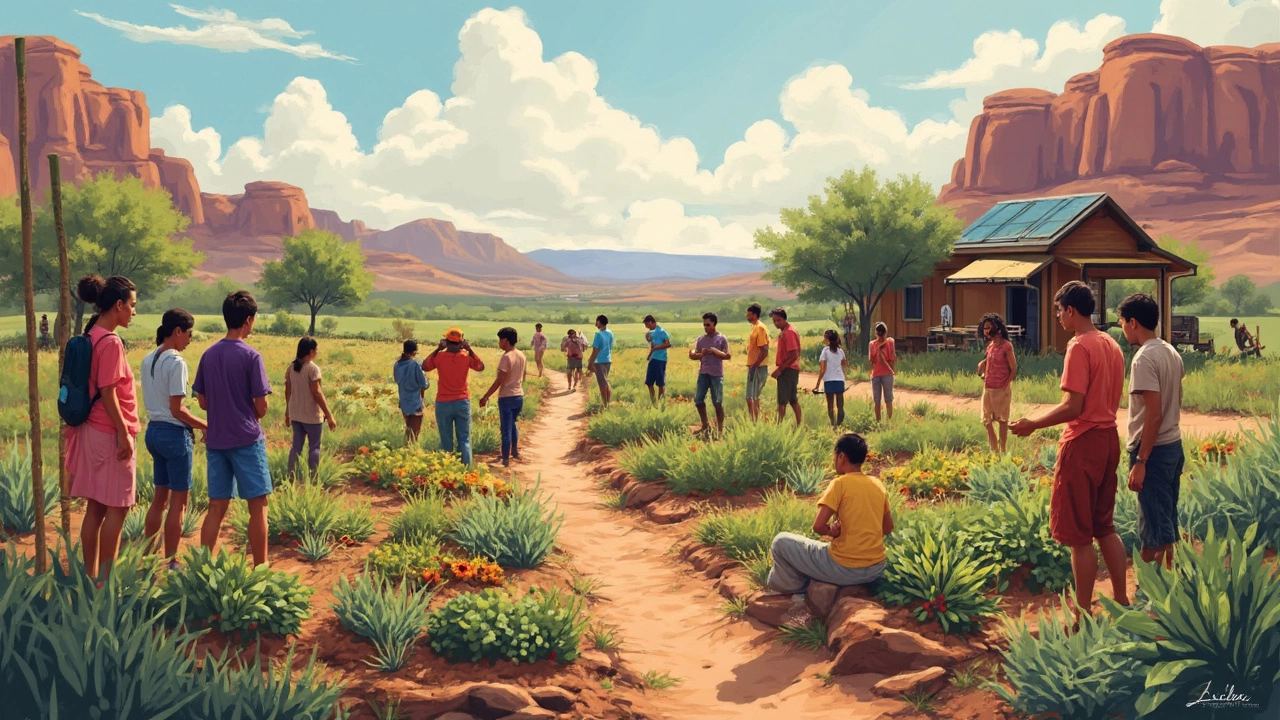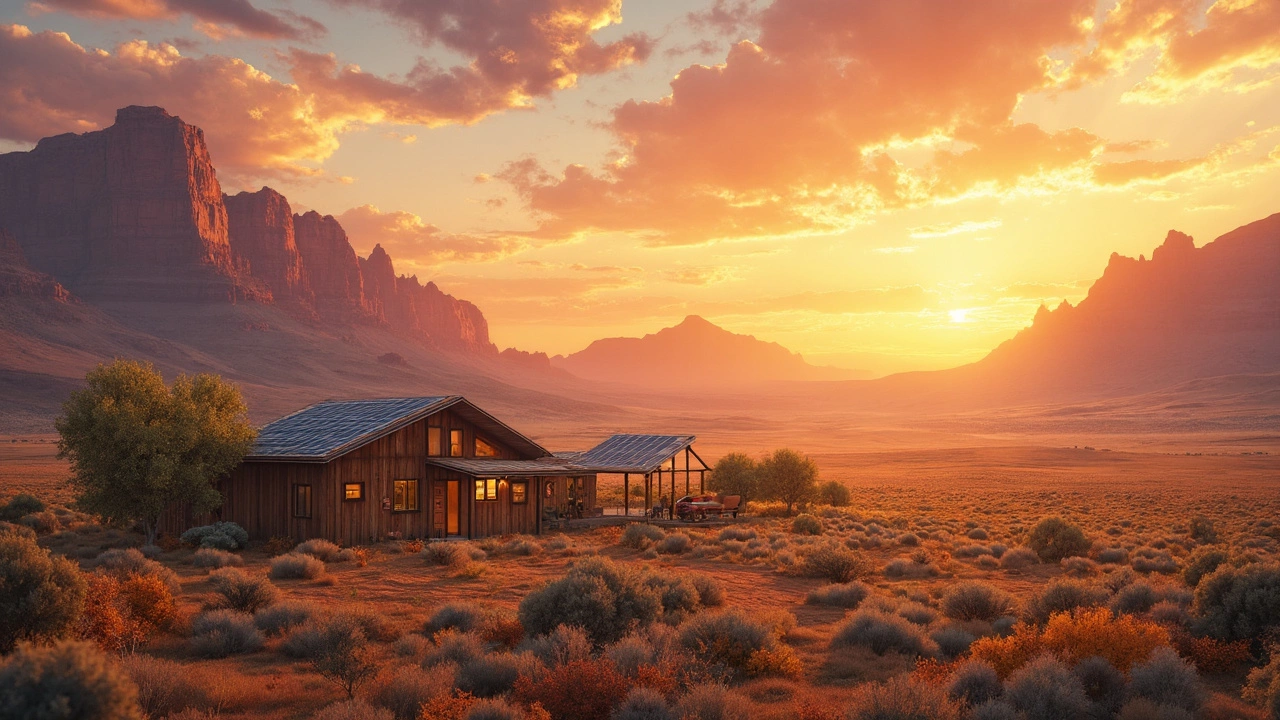Ever thought about getting your slice of land in Utah without breaking the bank? Well, the classic homesteading methods from back in the day are pretty much history, but don't throw in the towel just yet. There are still some clever ways to land yourself a piece of the wilderness here.
First off, understand a bit of the history. The idea of staking a claim and building a life from scratch used to be a cornerstone of the American Dream. While the old-school Homestead Act is just a chapter in the history books now, thinking outside the box can still get you close to that dream in a place like Utah.
- The History of Homesteading
- Modern Opportunities in Utah
- Legal Requirements and Steps
- Tips for Successful Homesteading
The History of Homesteading
Back in the 19th century, the US made a bold move to get people settling the lands out west. This came in the form of the Homestead Act of 1862. Signed into law by President Abraham Lincoln, it was basically a free-for-all land grab – not just for Americans but for immigrants too. If you wanted land for sale, all you had to do was pay a small fee, and bam, you got your plot.
Here's how it worked: you got up to 160 acres, but there were strings attached. You had to build a place to live, actually live there for five years, and make the land productive (like farming or ranching). Basically, you had to homestead the land.
It sounds quaint now, but this was serious business. Between 1862 and 1900, about 80 million acres of public land (that's a chunk about the size of New Mexico) was handed out through this program.
The system wasn't without its flaws. Not everyone succeeded. In fact, a bunch of folks packed up and headed back east when they realized just how harsh life could be in the middle of nowhere. Others thrived and turned small claims into booming farms or ranches.
Fast forward to the 1930s, and the Tale of Homesteading was winding down. The government wrapped things up with the Federal Land Policy and Management Act of 1976, which stopped new homestead claims. But many of those early decisions shaped what land ownership looks like today and, in some ways, opened the door for those still interested in exploring homesteading in Utah.
Modern Opportunities in Utah
So, you're curious about getting some land in Utah, but without those classic homestead laws, what are your options? Let me break it down for you. While the Homestead Act is no more, there are still some ways to snag land, some of which might even feel like a modern version of homesteading.
First off, check out the Land Sale programs. The state occasionally has auctions for public lands. Keep an eye on state and regional websites for announcements about these events. These opportunities can be a bit of a gamble because the competition can drive prices up, but with a little luck, you might score a decent piece of Utah land.
Another route is through small-scale farming incentives. If you're into sustainable living or organic farming, look into programs that encourage agricultural use of land. These might not give you the land for free, but there are sometimes tax benefits or grants to offset costs. The state supports various farming programs that people often overlook.
Don't forget about DIY land searching. Explore listings from private sellers. Websites dedicated to rural and undeveloped lands can sometimes feature hidden gems that bigger real estate sites might miss. It's all about being patient and curious. Plus, talking around local communities sometimes uncovers private deals before they're even posted online.
There's also the option of lease-to-own contracts. Some owners are open to this arrangement, which allows you to start living on the property and gradually pay it off. It's a bit like renting with an option to buy, which could be easier on the wallet initially. Just make sure to dot your i's and cross your t's with these contracts.
If numbers are your thing, consider this:
| Year | Average Land Price (per acre) |
|---|---|
| 2023 | $2,200 |
| 2024 | $2,350 |
These are rough figures, but the upward trend shows Utah can be an enticing yet pricey market.

Legal Requirements and Steps
So, you're psyched about homesteading in Utah? Awesome! But before you set up your cabin in the woods, there are a few hoops to jump through. Let's break it down.
First things first, a little homework goes a long way. You can't simply pick any spot and call it home. Here’s what you need to know:
- Research the Land: Not all land is up for grabs. Check what's available, focusing on state-owned lands or areas advertised for private sale that allow for sustainable development.
- Consult Local Laws and Zoning: Rules can vary significantly from one area to the next. Check local zoning laws to ensure you can actually build a home or start a farm.
- Understand Water Rights: Water is a big deal, especially in Utah. Make sure you know your rights and any limitations before you decide on a plot.
- Permits and Applications: Be prepared to fill out a stack of paperwork. Applications for land use, building permits, and possibly environmental impact assessments might be necessary.
Once you’re clear on the requirements, here's a quick guide to help you through the process:
- Visit the County Recorder’s Office: Local land records will give you the scoop on available properties and any historical quirks they might have.
- File a Claim or Purchase: Depending on the property, you might need to file an official claim or simply complete a purchase transaction.
- Register Your Land: Once you’re squared away, register your new pad with the local authorities. This step is crucial to avoid any future hassles.
Tables with land availability, pricing details, or even stats on water supply can be super handy. Here’s a tiny example:
| County | Land Price per Acre | Water Access |
|---|---|---|
| Utah County | $3,000 | Yes |
| Summit County | $2,500 | No |
Proper preparation and research can save you tons of headaches down the road. So, do your homework and make your homestead dream a reality!
Tips for Successful Homesteading
Diving into homesteading in Utah? It's more of a marathon than a sprint, so some practical tips can make the journey smoother. First up, know your land's potential. Utah's got a mix of terrains—from fertile valleys to arid deserts. It's crucial to understand what's feasible on your patch, whether it's farming, livestock, or off-the-grid living.
Water is your lifeline in Utah homestead law, so securing water rights is a must. Check this early to avoid any nasty surprises. If you're planning on farming, install efficient irrigation systems to make the most of the sometimes scarce water supply.
Next, think about energy. Solar and wind setups are popular choices due to the state's sunny and breezy conditions. They're eco-friendly, keep your costs down, and often qualify for local tax credits.
Got a family? Plan for community access. Distance from schools, hospitals, and grocery stores affects your lifestyle, especially in rural Utah. Communities often have local groups or co-ops that can be a great support network.
Land for sale in isolated areas might seem tempting when it's cheap, but do your research on infrastructure. Costs for roads, electricity, and services can add up fast. A DIY attitude is helpful, but some things need expertise.
Finances are key, too. Set a realistic budget and stick to it. Unexpected expenses like repairs or legal fees can pop up. A solid cushion or backup plan keeps the dream ticking along without the stress.
If you're up for it, join local homesteading forums and online groups. The shared wisdom of experienced homesteaders can save you a ton of headaches. Plus, they can point you to resources and community events.
Lastly, embrace patience and adaptability. Weather, crops, or even the best-laid plans can go sideways now and then. Being flexible and open to change helps keep the project on track.

